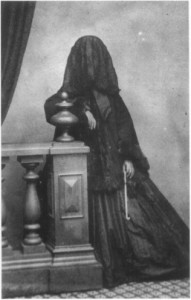 Widows have held a peculiar and often ambiguous position in British culture for several centuries, and this is not least due to the fact that they were often able to act as propertied subjects when other women could not, and that – not dissimilar to but yet distinctly different from the spinster – they were available for remarriage, and sexually experienced. But this post is not concerned with the days before women attained equal property rights, and neither is it occupied – as much of my research in this area is – with the widow as a transgressive cultural and literary figure.
Widows have held a peculiar and often ambiguous position in British culture for several centuries, and this is not least due to the fact that they were often able to act as propertied subjects when other women could not, and that – not dissimilar to but yet distinctly different from the spinster – they were available for remarriage, and sexually experienced. But this post is not concerned with the days before women attained equal property rights, and neither is it occupied – as much of my research in this area is – with the widow as a transgressive cultural and literary figure.
 Rather, I’d like to take a brief look at a point in British history which lies not long before the years in which the activism of feminism’s second wave gathered pace, but which, in terms of gendered norms and customs, still falls close to the period following World War II. In my search through various archives and libraries, the early 1960s have provided two sources that, despite their different intentions and origins, provide an intriguing view of widows’ lives in the first years of the decade.
Rather, I’d like to take a brief look at a point in British history which lies not long before the years in which the activism of feminism’s second wave gathered pace, but which, in terms of gendered norms and customs, still falls close to the period following World War II. In my search through various archives and libraries, the early 1960s have provided two sources that, despite their different intentions and origins, provide an intriguing view of widows’ lives in the first years of the decade.
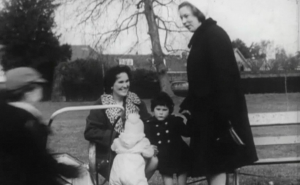 One is a television broadcast by the Central Office of Information from 1962. It advertises the positive effects of new child benefits on the wellbeing and security of the new generation of British children born after the war. The ca. fourteen-minute programme (see bottom of this post for the full video) explains the new financial and practical resources available to mothers for the purpose of bringing up their children in a country no longer constrained by rationing (which had ended in 1954).
One is a television broadcast by the Central Office of Information from 1962. It advertises the positive effects of new child benefits on the wellbeing and security of the new generation of British children born after the war. The ca. fourteen-minute programme (see bottom of this post for the full video) explains the new financial and practical resources available to mothers for the purpose of bringing up their children in a country no longer constrained by rationing (which had ended in 1954).
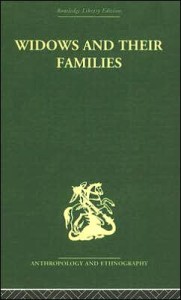 The other source is a transcript of a BBC Home Service broadcast entitled “The World of the Widow” (22 July 1960), edited by Peter Marris, a sociologist who, two years prior to the airing of the programme, had published one of the first studies on the effects of bereavement on adults in England: Widows and Their Families (1958). Based on this research, “The World of the Widow” combines interviews with widows on their experiences – emotional, physical, economic, and social – of the loss of their husbands with contextual information about the inadequacies of widows’ pensions and a more general lack of support for widows by the state.
The other source is a transcript of a BBC Home Service broadcast entitled “The World of the Widow” (22 July 1960), edited by Peter Marris, a sociologist who, two years prior to the airing of the programme, had published one of the first studies on the effects of bereavement on adults in England: Widows and Their Families (1958). Based on this research, “The World of the Widow” combines interviews with widows on their experiences – emotional, physical, economic, and social – of the loss of their husbands with contextual information about the inadequacies of widows’ pensions and a more general lack of support for widows by the state.
The programme is introduced with a summary of the struggles a widow encountered in the 1950s and early 1960s. As Marris puts it, “a widow must face: how to master her grief, how to be a father as well as mother to her children, [and] how to manage on an income which may be only a quarter of what her husband used to earn” (“The World of the Widow”, p. 1). But, as one of Marris’ interviewees movingly confesses, how a widow masters her grief was not always a priority for a society that “coped with the huge losses of both wars by a complex mixture of 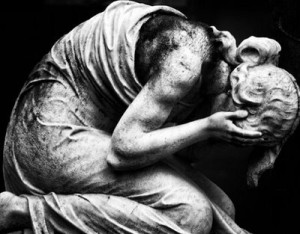 remembering and forgetting”, with an “emphasis […] on forgetting after the Second World War” (Jalland, Death in War & Peace, pp. 179-80). She admits, “I don’t know, I just couldn’t stand it, there was no-one around me to tell me what to do. When anybody did come they said, ‘You mustn’t think of yourself, you must think of the children.’ I felt like crying but they said I must not, I must think of the children. It was all children and no mother” (“The World of the Widow”, p. 1).
remembering and forgetting”, with an “emphasis […] on forgetting after the Second World War” (Jalland, Death in War & Peace, pp. 179-80). She admits, “I don’t know, I just couldn’t stand it, there was no-one around me to tell me what to do. When anybody did come they said, ‘You mustn’t think of yourself, you must think of the children.’ I felt like crying but they said I must not, I must think of the children. It was all children and no mother” (“The World of the Widow”, p. 1).
We encounter this notion of the widow as mother but not as bereaved woman again in the 1962 broadcast on child welfare. In the first minute of the video we are introduced to Mrs Brown, “a widow left with three young children to bring up”. In line with the broadcast’s introductory message that “in Britain it’s well understood that one of a nation’s greatest assets is the health and wellbeing of its children”, the welfare state’s focus lies on the new generation. Women benefit only as mothers, as carers for those representing Britain’s future. The wellbeing of the mother is only a central concern here in so far as it directly impacts on the wellbeing of the child, and by extension on the future of 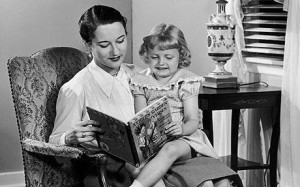 the country (a discourse perhaps reminiscent of the link established between the health of the British family and the success of the British Empire in the second half of the nineteenth century). As such, the widow, too, is reduced to the figure of mother rather than being considered as a woman who has to bring up her children while coping with the grief caused by the loss of her husband.
the country (a discourse perhaps reminiscent of the link established between the health of the British family and the success of the British Empire in the second half of the nineteenth century). As such, the widow, too, is reduced to the figure of mother rather than being considered as a woman who has to bring up her children while coping with the grief caused by the loss of her husband.
This emotional picture is complemented by the praise of the financial assistance offered to Mrs Brown. The narrator tells us that without state support “she’d have had a very hard time”. This sentence, alongside the cheery playground scenes in which Mrs Brown happily chats with fellow mother Mrs Atkins, insinuates that thanks to the benefit system Mrs Brown is not having a “very hard time” at all.
 But the narrator’s subsequent line belies the context of this impression as we are reminded that “not half a century ago [Mrs Brown] might have been totally dependent on private charity to feed and clothe her children.” The widow’s wellbeing is measured not by her happiness as an individual and as a mother, but solely on her ability to provide for and look after her children without relying on “private charity”. What this cosy image of middle-class widowhood and motherhood disguises, however, is the fact that across the social stratum the majority of widows suffered – next to the pain of bereavement – a significant loss of income. Their meager pension was considered an unearned income and taxed as such at the highest rate, leaving them with scarce financial means and rendering child benefit a necessity on which many widowed mothers desperately relied rather than the generous state contribution the broadcast portrays.
But the narrator’s subsequent line belies the context of this impression as we are reminded that “not half a century ago [Mrs Brown] might have been totally dependent on private charity to feed and clothe her children.” The widow’s wellbeing is measured not by her happiness as an individual and as a mother, but solely on her ability to provide for and look after her children without relying on “private charity”. What this cosy image of middle-class widowhood and motherhood disguises, however, is the fact that across the social stratum the majority of widows suffered – next to the pain of bereavement – a significant loss of income. Their meager pension was considered an unearned income and taxed as such at the highest rate, leaving them with scarce financial means and rendering child benefit a necessity on which many widowed mothers desperately relied rather than the generous state contribution the broadcast portrays.
 It is tempting to draw potentially simplistic comparisons and conclusions here, but considering a widow with children first and foremost in her capacity as mother (in which she was supported by the state) rather than in her role as a bereaved and single woman (in which state support was far from sufficient) also suggests an unease with the latter category that has persisted through much of history and, some would argue, to the present day. In Marris’ “The World of the Widow”, two interviewees make explicit the social awkwardness with which they are received by their friends (and which they feel at events organized around couples) not only due to their grief but also because, once again, they are unattached women. One interviewee explains that, unlike a single man, a single woman makes for an awkward addition to social occasions because
It is tempting to draw potentially simplistic comparisons and conclusions here, but considering a widow with children first and foremost in her capacity as mother (in which she was supported by the state) rather than in her role as a bereaved and single woman (in which state support was far from sufficient) also suggests an unease with the latter category that has persisted through much of history and, some would argue, to the present day. In Marris’ “The World of the Widow”, two interviewees make explicit the social awkwardness with which they are received by their friends (and which they feel at events organized around couples) not only due to their grief but also because, once again, they are unattached women. One interviewee explains that, unlike a single man, a single woman makes for an awkward addition to social occasions because
society doesn’t know how to react to a widow and everybody’s too embarrassed to invite you to join mixed company – you see an odd woman is very different from an odd man, and I was so delighted when I was first invited out to dinner and I let these people know just what a wonderful thing they had done for me. I felt that instead of being an odd bod I was acceptable to their little society and that meant such a lot. (“The World of the Widow”, p. 2)
A second interviewee explains the awkwardness of the “odd woman out” in more personal terms, emphasizing that as much as her friends feel awkward about inviting her to social occasions attended only by couples, she, too, actively avoids these events and feels awkward at them. To her, being the only single woman in the room heightens her feelings of grief and loneliness:
Well, there is no doubt about it, where other husbands and partners are involved, on the whole you are the odd one out. Friends are inclined to invite me to social affairs but unless it is an all-women affair or there are going to be a few spare men, I try and avoid them because there is a particular sense of loneliness at that time, dances and such like, it’s rather difficult if you feel that people are taking pity on you, you have a certain amount of pride naturally. (“The World of the Widow”, p. 2)
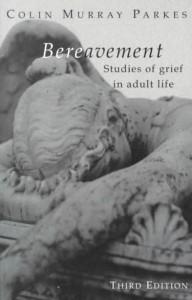 As Jalland puts it, “war widows received little attention or community support in the decade after the end of the war” (Jalland, p. 199). Yet, in this context it is also worth nothing – as Jalland does – that the 1950s and 1960s saw the first sociological and anthropological studies of grief, studies that rejected the pathological discourses of previous decades which saw grief and its effects as a medical issue, a mental disorder requiring psychiatric or psychoanalytic attention. Despite focusing on groups of adults, this new research – by Geoffrey Gorer, Peter Marris, and later Colin Murray Parkes, among others – redressed the silence of Britain’s collective, national grief by analyzing individual experiences of and responses to bereavement to better understand the emotional processes involved and improve support services – national and in local communities – for those suffering loss.
As Jalland puts it, “war widows received little attention or community support in the decade after the end of the war” (Jalland, p. 199). Yet, in this context it is also worth nothing – as Jalland does – that the 1950s and 1960s saw the first sociological and anthropological studies of grief, studies that rejected the pathological discourses of previous decades which saw grief and its effects as a medical issue, a mental disorder requiring psychiatric or psychoanalytic attention. Despite focusing on groups of adults, this new research – by Geoffrey Gorer, Peter Marris, and later Colin Murray Parkes, among others – redressed the silence of Britain’s collective, national grief by analyzing individual experiences of and responses to bereavement to better understand the emotional processes involved and improve support services – national and in local communities – for those suffering loss.
 It was not until 1971 that widows organized themselves into national pressure and support groups in the form of the War Widows’ Association (founded by a widow who refused to pay 50% tax on her widows’ pension) and the National Association of Widows. Previously, and over decades, several Members of Parliament had raised the issue of widows’ pensions again and again (both the low amount paid and their high taxation), but it was not until widows took matters into their own hands as a group that the taxation of their pension was reduced and eventually abolished completely.
It was not until 1971 that widows organized themselves into national pressure and support groups in the form of the War Widows’ Association (founded by a widow who refused to pay 50% tax on her widows’ pension) and the National Association of Widows. Previously, and over decades, several Members of Parliament had raised the issue of widows’ pensions again and again (both the low amount paid and their high taxation), but it was not until widows took matters into their own hands as a group that the taxation of their pension was reduced and eventually abolished completely.
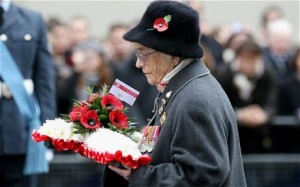 Over fifty years after “The World of the Widow” programme and the “Child Welfare” broadcast, British society is arguably more comfortable with single women, and with widows, though the latter category has become somewhat less common due to the decline in marriage rates over the last decades. Yet, war widows in particular – young and old – still hold a particular significance in British culture, a significance that deserves exploring more closely in my next posts.
Over fifty years after “The World of the Widow” programme and the “Child Welfare” broadcast, British society is arguably more comfortable with single women, and with widows, though the latter category has become somewhat less common due to the decline in marriage rates over the last decades. Yet, war widows in particular – young and old – still hold a particular significance in British culture, a significance that deserves exploring more closely in my next posts.
Resources
BBC Home Service, “World of the Widow” (UK: 1960), Wellcome Library
BBC On This Day, 1950-2005, “4 July 1954: Housewives Celebrate End of Rationing”
Central Office of Information, “Child Welfare” (UK: 1962), Wellcome Library [full video]
Geoffrey Gorer, “The Pornography of Death”, Encounter (October 1955), pp. 49-52 [full article]
Sigmund Freud, “Mourning and Melancholia” (1917) [full essay]
Pat Jalland, Death in War & Peace: A History of Loss & Grief in England, 1914-1970 (2010)
Erich Lindemann, “Symptomatology and Management of Acute Grief” (1944) [full article]
Colin Murray Parkes, Bereavement: Studies of Grief in Adult Life (1972) [Google Books preview]
Really interesting Nadine! Reading your blog a question came to mind, which may or may not become apparent through me waffling on in this comment. I read something earlier on this week on the genesis and evolution of child welfare/protection, a journal article by Monica Flegel; “Conceptualising Cruelty to Children in Nineteenth Century England” (Ashgate: 2009).
‘In the late nineteenth century, the discourse surrounding the child moved from fictional representations of child trauma and family dysfunction first to imitations of narrative modes by social agencies for the protection of children, then, as these agencies became more professionalised, to fact laden case reports. Yet whether novelists or charitable societies produced this discourse appears less significant than the public’s voracious appetite for stories about familial failures and children at risk.’
I know your blog here is concerned with the early 1960’s, but I was wondering if the same discourse surrounding ‘the family unit’ and child wellbeing is still being played out here? As you mention in your blog, there seems to be an attempt to ignore the bereaved women in favour of a portraying the state as the mothers’ salvation. I viewed this as a ploy to exploit our ‘voracious appetite’ for stories of ‘familial failures.’ Would you agree that this deliberate ignorance (strong word I know) is also apparent within literature? For example, Novels centred on the ‘Widow’ who is noted only for her ability to provide adequate care? It would be interesting to discuss.
Interesting mirror to another women’s issue in employment.
Women in many posts (BBC, civil service for example) could be dismissed when they married.
This was because they were now supported by a husband and also (in a more interesting way), blocking the appointment of women who were unmarried and thus in need of employment and income.
Both represent an expectation of life in terms of men